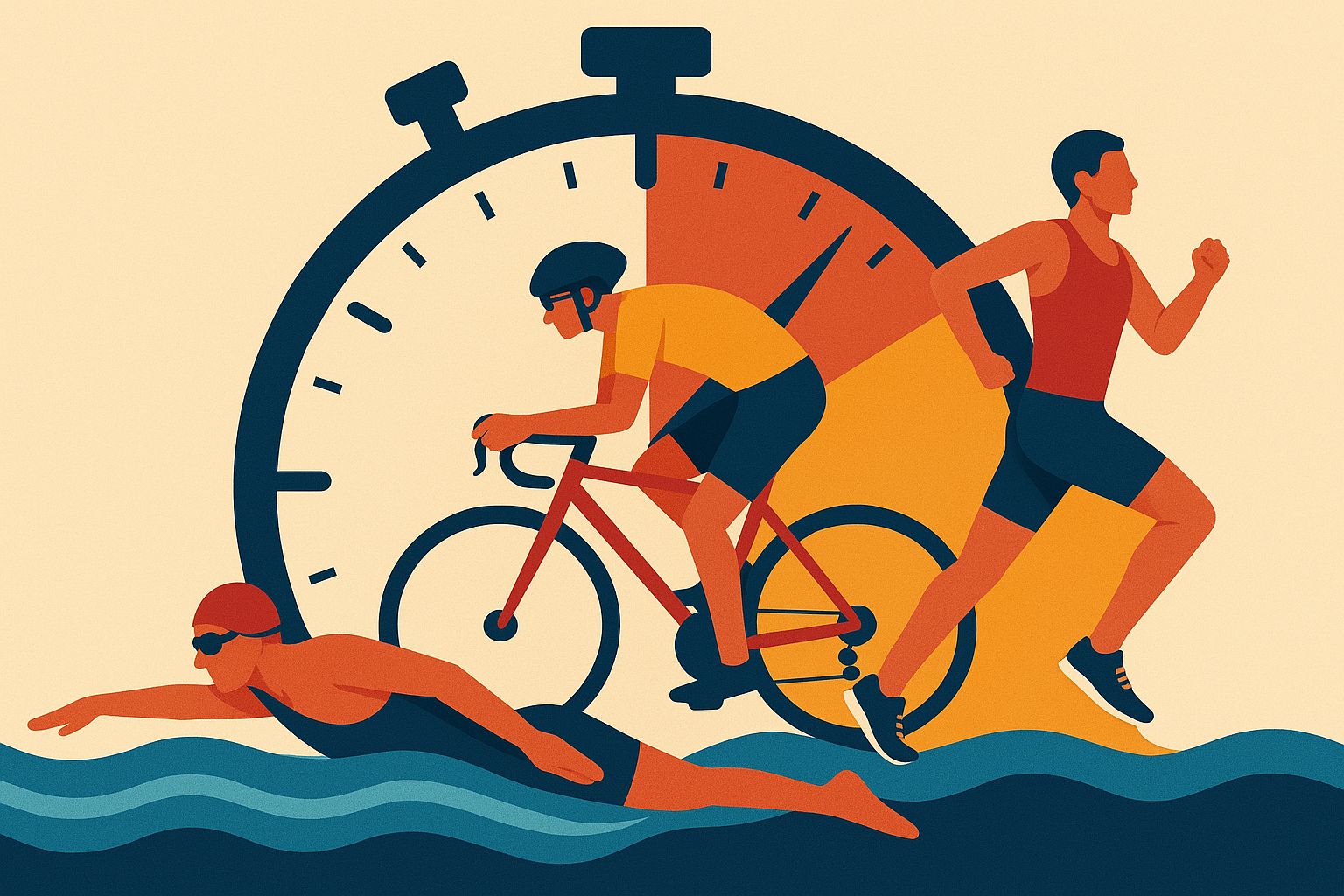Unleashing the Power of the Triathlon Split Calculator
Triathlons challenge athletes to push their limits across three very different disciplines: swimming, cycling, and running. With so many variables to manage, knowing how to pace yourself during each leg of the race is crucial for success. Enter the triathlon split calculator, an invaluable tool that helps athletes understand how long each segment will take and how to distribute their energy across the race. In this article, we’ll explore what a triathlon split calculator is, how it’s calculated, and how it can help you race smarter.
Triathlon Split Calculator
What is a Triathlon Split Calculator?
A triathlon split calculator helps athletes break down the race into its individual components: the swim, the bike, and the run. Each of these segments, or “splits,” is crucial in determining your overall race time. The calculator allows you to estimate how long each section of the race will take based on your pace and training data. More than just a time tracker, it’s a strategic tool that helps you plan your race, conserve energy, and ensure that you have the stamina to finish strong.
The key to a successful triathlon is managing your pacing across all three segments. The split calculator breaks down your performance into smaller, more digestible parts. With it, you can avoid overexertion in the swim, manage your energy wisely on the bike, and ensure you’re ready to push through the final run.
How It Works: Calculating Your Splits
The triathlon split calculator works by analyzing several factors: the length of each leg (swim, bike, and run), your estimated pace for each leg, and the total time you want to spend on the course. The key to using the calculator effectively is accurately estimating your pace for each discipline, and understanding the physical demands of each part of the race.
The Swim Split
The swim is usually the first part of a triathlon, and although it may be the shortest, it’s essential to start out at a pace that won’t exhaust you early on. To calculate your swim split, you’ll need to know your swimming pace—typically measured in time per 100 meters or yards—and the distance of the swim leg. For example, if your pace is 2 minutes per 100 meters and the swim is 1500 meters, you’ll multiply the pace (2 minutes) by the number of 100-meter segments (15) to determine your total swim time.
The Bike Split
Next comes the bike leg, which can be a critical factor in your overall time. The bike is typically the longest leg of the race, and your split will depend heavily on your cycling ability, the terrain, and race conditions. To calculate your bike split, you need to estimate your average speed (in kilometers or miles per hour) and multiply that by the total distance of the bike course. For example, if you anticipate cycling at an average speed of 30 km/h over a 40-kilometer course, you can calculate your bike split time accordingly.
The Run Split
The final leg, the run, is where many triathletes face the most challenge. By this point in the race, you’re likely already fatigued from the swim and bike, so pacing during the run is crucial to avoid burning out too soon. The run split is calculated by estimating your running pace (in minutes per kilometer or mile) and multiplying it by the total run distance. This gives you an idea of how long the final portion of the race will take.
Transition Times
While transitions (the time it takes to switch from one discipline to another) are often overlooked, they can make a difference in your overall performance. Transition times are factored into the total race time in some split calculators, but not always. It’s important to account for these periods when planning your race, especially if you’re aiming for a specific overall time.
Using the Calculator to Plan Your Race Strategy
Once you’ve calculated your splits, the next step is to use this information to create a solid pacing strategy. A good triathlon split calculator not only gives you the estimated times for each segment but also helps you manage your energy efficiently.
Knowing your predicted swim, bike, and run times allows you to avoid the mistake of going out too fast in the beginning. Many athletes start too aggressively in the swim, only to find themselves struggling by the time they reach the run. With the help of the calculator, you can set realistic expectations for each leg and adjust your pace throughout the race.
Additionally, your pacing strategy can be adjusted for race conditions. For example, if you know the bike course has many hills, you can modify your bike split to account for the extra effort required. Similarly, if you’re racing in hot weather, you may decide to slow your pace slightly during the run to prevent overheating.
Maximizing Performance with the Split Calculator
The triathlon split calculator is more than just a tool for time estimation. It’s a way to make your race day performance more intentional. Understanding your splits ahead of time gives you the opportunity to plan how you’ll distribute your energy across each discipline. This helps you avoid hitting the wall in the run or overextending yourself early on.
Realistic Goal Setting
A great benefit of using a triathlon split calculator is that it helps you set realistic goals for each segment of the race. By breaking the race down into smaller parts, you can aim for specific goals in each discipline, whether it’s hitting a certain swim time or finishing the bike in under a certain number of minutes. These smaller, specific goals help keep you focused and motivated throughout the race.
Adjusting for Race Day Conditions
Race day is unpredictable. Weather, terrain, and your own body’s performance can vary from training to race day. A good triathlon split calculator will allow you to adjust your predictions based on these factors. If the weather is warmer than expected or if you’re feeling fatigued after the swim, the calculator allows you to quickly adjust your pacing strategy. This adaptability can make the difference between a successful race and one where you’re forced to slow down or quit.
The Benefits Beyond the Race
While the triathlon split calculator shines on race day, it can also be a valuable training tool. By estimating your splits before you race, you can train in a way that prepares you for each segment. This allows you to target your weaknesses and improve your strengths in specific areas of the race. Whether it’s refining your swim technique or improving your cycling speed, understanding your splits helps guide your training toward a more balanced and effective race strategy.
In addition to physical preparation, using the calculator can help you mentally prepare for the race. Knowing your predicted splits helps you manage your expectations and avoid any surprises on race day. With a clear understanding of how long each section will take, you’ll approach the race with greater confidence and less anxiety.
Fine-Tuning for Future Races
After you’ve completed a race, your splits can provide valuable feedback for future performance. By comparing your actual race splits to your predicted ones, you can pinpoint areas where you can improve. For instance, if your swim time was slower than expected or your bike split took longer than planned, you can adjust your training accordingly. The triathlon split calculator becomes a tool for continuous improvement, allowing you to optimize your training and race strategy for future events.
Race Smart, Finish Strong
The triathlon split calculator is more than just a time estimator—it’s a key to unlocking your full potential as a triathlete. By calculating your splits, you gain insight into how to manage your energy, pace yourself across the swim, bike, and run, and strategically plan for race-day conditions. Armed with this tool, you can race smarter, avoid burnout, and finish stronger than ever before. So, use the split calculator to take control of your training, optimize your race strategy, and ensure that you’re not just crossing the finish line but doing so with your best effort.




